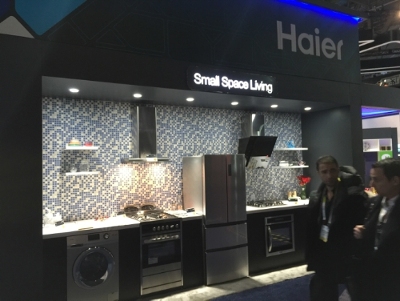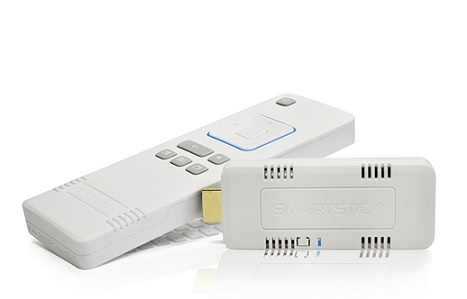This article was 1st published on our sister Site, The Internet Of All Things.
By: Mauli Buch
Tech geeks will agree that one of the world’s largest consumer electronics shows, CES, is a discovery hub for all innovations digital. The 4-day event that started Jan. 6, has already showcased zany ideas ranging from robotics to 3D printing to drones & driverless cars.
However, this year’s CES seems to be largely trending around the theme of the Internet of Things (IoT). IoT has, sort of, become the recurring theme of the event as panel after panel of IoT experts and enthusiasts take the stage to espouse its advantages, so also warn the world of its shortcomings at the same time.
IoT – Projections vs reality
Several experts, while acknowledging the ease of accessibility of better known products like Google’s Nest thermostat which were designed with easy setup & connectivity, also pointed out that there were many other products that fell short of expectations & ease of use. These were likely to fail, thereby making the consumers stumble on their smart home plans.
This group felt that since most consumers were not savvy or equipped to resolve tech related issues on their own, these concerns threatened to hold the IoT market back from reaching its lofty projections.
Kodak Alaris is partnering with Google to make it easier for users to connect to document scanning devices from any type of computing environment—mobile, desktop or Cloud—by taking advantage of Google IoT platforms, Brillo and Weave.
IoT – Big names show how it is done
Such pessimism not withstanding, big players like Amazon, Microsoft and Samsung launched their IoT and smart products that were simply far out – exciting & different.
Making a play for a piece of the smart home action, Amazon launched a new line of semiconductors – chips that it planned to sell to smart home product home designers to connect Wi Fi routers, IoT devices & other smart home appliances.
According to Amazon, the chips were based on ARM technology that was used to power most smartphones across the world. The Alpine chips will have 4 processors along with networking technology that will enhance the performance of smart home gadgets.
Samsung, on the other hand, claimed it was “well positioned” in the market. While delivering the keynote address at CES 2016, President of Samsung’s IT Business W P Hong said his company had a broad product portfolio, from components to networking technology to mobile devices to appliances. He added that even the batteries were a part of the mix.
Fabrice Hudry, Vice-president of Samsung SDI America said that its Strip Battery was ultrathin, light & bendable, which made it ideal for most wearable devices. “We are entering into the age of the Batteries of Things,” he said.
Chinese electronics giant Haier displayed its home appliances that is part of “7 smart home ecosystems.
Samsung also showcased a range of home appliance products that were connected to the Internet. Its US $5,000 Family Hub Refrigerator had 3 cameras inside to take photos of all the food on the shelves. The door had a 21.5-inch built-in touchscreen for accessing apps & video.
Another product, the FlexDuo stove has Wi Fi to let you start, stop & monitor the oven from afar.
Introduced at the 2016 CES, the new SmartStick Media Center supports full Android giving it more streaming apps and channels than any other streaming device.
If Amazon and Samsung are there, can Microsoft be far behind? Microsoft’s Bryan Roper showed a demo on how Windows was integrating with smart home platforms – which according to him was more than just the basic integration of two devices.
He used digitial assistant Cortana to generate a chart comparing people in the house & how much they were likely to use different appliances.
Samsung & Microsoft also announced their collaboration on IoT technologies. During the keynote, Microsoft showed Windows 10 communicating with Samsung appliances.
Whirlpool, too, launched its ‘Smart Kitchen Suite’ – a three-piece collection of refrigerator, dishwasher & stove that offers remote controlling of the appliances & alert notifications.
IoT for healthcare & wearables
Few new connected devices that would help patients & caregivers stay connected also featured at the CES 2016.
The ReliefBand, an FDA cleared device, helped treat nausea & vomiting associated with morning & motion sickness without the use of any drugs. The technology used programmed pulses with highly specific waveform, frequency & intensity to stimulate the median nerve on the underside of the wrist.
MOCAheart, a cardiovascular heart monitor was a device that helped determine healthy heart indicators like heart rate & blood oxygen levels.
However, Samsung stole the show with its cool wearables that were not only limited to smart wrist watches, arm bands or fitness. The company said that it had been working on smart suits & smart bags alongside the innovative workout gear.
Its Welt or Wellness Belt, for example, connects with a smartphone to provide data on steps taken, active & inactive minutes, eating habits, waistline & what not. The data stored on its app will also alert users if they gained weight in the coming month, based on food habits.
Another smart wear at the CES 2016 was its Sol Bag that contained solar panels on the side to charge a Galaxy smartphone.
Auto tech
Major automakers also showcased an interesting array of innovations, going beyond Google’s self-driving car concepts and Tesla’s breakthrough electric vehicles.
Auto lovers were elated as Volvo’s ‘Pilot Assist II’ was announced. The semi-autonomous tech was expected to be part of its mainstream S90 sedans later this year, making it the 1st car available in the US & worldwide with semi-autonomous production tech. The currently deployed Pilot Assist I stops & steers with visible lane markings @ up to 30 mph, while the newly announced Pilot Assist II will take this up a notch to 80 mph.
Swiss Company Rinspeed’s Etos concept car has its own drone with an on-board landing pad, which can scout out the terrain ahead & go shop for provisions for its passengers. It learns the driver’s points of interest & entertainment preferences & also incorporates the Harman LIVS automotive Connected Car Platform & connectivity to MS Office 365 services.
Perhaps the most visibly striking piece of automotive tech announced at CES 2016 was the California startup Faraday Future’s FFZERO1 concept car. This futuristic-looking all electric vehicle boasts of a 1000 HP, 4 motor power train with a max speed of 200 MPH and a 0-60 time of less than 3 seconds. It had no door, supplied water & oxygen to the driver’s helmet & had a smartphone embedded on the steering wheel.
BMW also showed off its i8 concept car with a mirrorless system which would replace the rearview & side mirrors, showing a display in the place of the rearview mirror. It used cameras to provide inputs to the display & eliminated the typical blind spots in mirrors as well as the aerodynamic drag introduced by the side view mirrors.
Image Credit: Kodak/Smartstick/Haier
•Share This•




